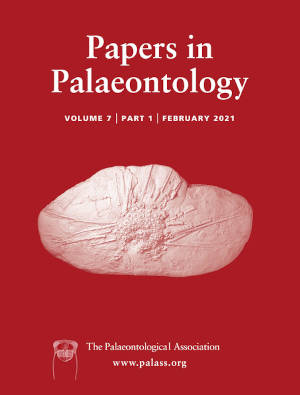Reg. Charity No. 1168330

Triconodon mordax, from the lowest Cretaceous (Berriasian) part of the Purbeck Group, Dorset, is known by an ontogenetic series of specimens that document aspects of tooth eruption and replacement. Based on micro-computed tomography of four specimens we refer one mandible to a new species, Triconodon averianovi, which differs from T. mordax in having a more slender, curved c; p4 notably low crowned with slender main cusp and smaller accessory cusps; and molars with weak cingula, m4 being notably smaller with weak cusps a and c. T. mordax is variable in the number of mental foramina and posterior jaw morphology. Scans reveal an earlier developmental stage (p3 in early eruption) than previously recognized for Triconodon, and demonstrate sequential, anteroposterior replacement of premolars; it remains unclear whether p1–2 were replaced. Scans also support an earlier hypothesis that m4 erupted late in life. Onset of m4 mineralization is likely to have coincided with eruption of p3, followed by replacement of dp4 by p4 and eruption of c. The m4 developed within the lingual side of the coronoid process, well above the tooth row. It remained in position and was subsequently accommodated in the active tooth row through unusually prolonged and localized growth of the posterior part of the mandible. This pattern is seen in some later triconodontids and appears to be unique to the family.
AcknowledgementsWe extend our most heartfelt thanks to Pip Brewer, Natural History Museum, London, for CT images of specimens at that institution, as well as Brian Davis for initiating the request and handling logistics of CT data transfer. We thank Frank Zachos and Jes Rust for helpful discussions. We further thank the editor Lionel Hautier, as well as Robert J. Asher and Helder G. Rodrigues, for their helpful comments and constructive feedback. RLC gratefully acknowledges support of the US National Science Foundation (grants DEB-9870173 and FRES-1925896) and National Geographic Society (grant 5918-97). This study was further funded by grants MA 1643/15-2 and MA 1643/20-1 of the Deutsche Forschungsgemeinschaft (DFG) to TM.